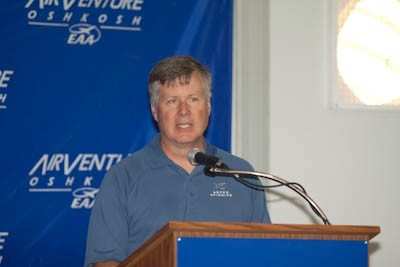Tue, Jan 17, 2012
Checkride Passed And Certification Granted January 11
Aspen CEO John Uczekaj writes in his blog Monday that he is the
proud holder of an instrument rating to tack on to his PPL. Uczekaj
(pictured) writes that he received the rating on January
11th.

From his blog:
"I did all of my flying in my
3-display Aspen DA40 and really got to put myself and the system
through its paces. I also made heavy use of my iPad during my
training. All of my instrument training was in the Southwest
primarily in the Albuquerque area where, as you all know, is
surrounded by mountains and high altitude terrain. The combination
of the availability of Nav Map, synthetic vision,
geo-referenced approach charts, redundancy, ease of use and
flexibility of how to display the information on a 3-display Aspen
system really gives the safety and situational awareness to safely
fly instrument procedures in the heaviest workload
situations.
"I believe the key to this is to have a plan laid out in how to
configure the displays and use them in both normal and emergency
situations. That way, when you are flying, you can transition to
the different displays quickly when you need them.
"Having the MFD1000 installed to provide full redundancy for the
AHRS, and air data information as well as the battery backup, is
critical when the need arises. I also think that having the AHRS
and air data information in one of the small windows of the MFD
when flying in normal configuration to crosscheck provides a
continuous redundant check on what I am flying so I can detect any
anomaly early is a real plus.
"During my training, I used the iPad to brief my approaches, but
used the geo-referenced charts on the Aspen while I flew the
procedures. I believe strongly that the ability to have a
geo-referenced chart and nav map in my primary view lessens my
workload when flying instrument approaches. It also provides a
backup to the iPad.
"For example, during my instrument checkride, I had briefed the
RNAV 22 at Double Eagle Airport on the iPad. As I was transitioning
into the approach, I wanted to double check my minimums as we were
doing a circle-to-land approach and I wanted to make sure I had
entered the right minimum altitude into the PFD. Unfortunately the
display on the iPad locked up and I could not see the minimums. I
was able to quickly look up at the Aspen to get the data instead of
having to reset or figure out what I had done to the iPad. The
redundancy aspects within the Aspen and with other devices and
sensors increase my safety and confidence in flying.
"I would be very interested in hearing how others are using the
Aspens in instrument conditions and flying scenarios. While I am
not quite “ready” to go flying in the clouds right now,
I will continue to gain confidence through practicing in simulated
conditions until the time comes. Please share with us your
experiences with using the Aspen in your instrument flying, so we
can all become safer and more aware pilots."
Congratulations, John. Here's to many happy years of flying in
the clouds.
More News
Aero Linx: International Federation of Airworthiness (IFA) We aim to be the most internationally respected independent authority on the subject of Airworthiness. IFA uniquely combi>[...]
Ultrahigh Frequency (UHF) The frequency band between 300 and 3,000 MHz. The bank of radio frequencies used for military air/ground voice communications. In some instances this may >[...]
A Few Questions AND Answers To Help You Get MORE Out of ANN! 1) I forgot my password. How do I find it? 1) Easy... click here and give us your e-mail address--we'll send it to you >[...]
From 2019 (YouTube Edition): Learning To Paint Without Getting Any On Your Hands PPG's Aerospace Coatings Academy is a tool designed to teach everything one needs to know about all>[...]
Also: Sustainable Aircraft Test Put Aside, More Falcon 9 Ops, Wyoming ANG Rescue, Oreo Cookie Into Orbit Joby Aviation has reason to celebrate, recently completing its first full t>[...]
 ANN's Daily Aero-Linx (05.06.25)
ANN's Daily Aero-Linx (05.06.25) ANN's Daily Aero-Term (05.06.25): Ultrahigh Frequency (UHF)
ANN's Daily Aero-Term (05.06.25): Ultrahigh Frequency (UHF) ANN FAQ: Q&A 101
ANN FAQ: Q&A 101 Classic Aero-TV: Virtual Reality Painting--PPG Leverages Technology for Training
Classic Aero-TV: Virtual Reality Painting--PPG Leverages Technology for Training Airborne 05.02.25: Joby Crewed Milestone, Diamond Club, Canadian Pilot Insurance
Airborne 05.02.25: Joby Crewed Milestone, Diamond Club, Canadian Pilot Insurance



